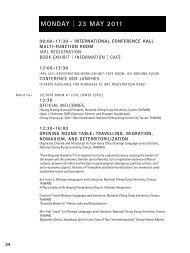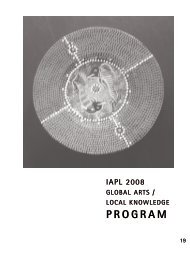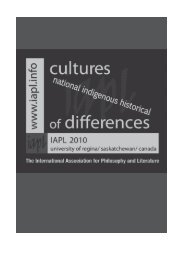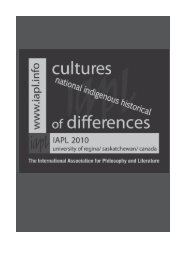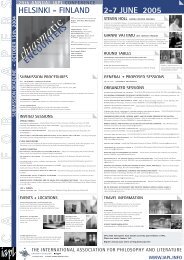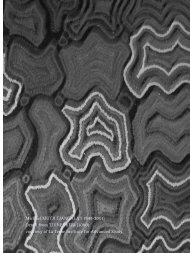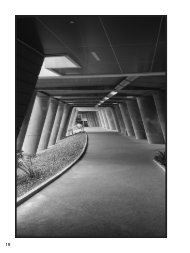IAPL2012-CB-0531-052.. - The International Association for ...
IAPL2012-CB-0531-052.. - The International Association for ...
IAPL2012-CB-0531-052.. - The International Association for ...
Create successful ePaper yourself
Turn your PDF publications into a flip-book with our unique Google optimized e-Paper software.
WELCOME TO ESTONIA<br />
Estonian towns), the future is always literally an archaeological problem: regulations<br />
require archaeological excavations <strong>for</strong> every future building site. One never quite<br />
knows what complications of history one will be obliged to contend with as one tries<br />
to move <strong>for</strong>ward into the future.<br />
Andrey Platonov, a prose writer whose whole stories some of my friends knew by heart,<br />
wrote in one of his pieces of the Soviet era, of a “memory of the future.” This phrase<br />
was then understood as condemning the utopian dream called Soviet communism. It<br />
still resonates today, however, with none of its acuteness lost, as crystalizing something<br />
of the complex temporal sense of a historical being in times of flux. <strong>The</strong> distribution<br />
of futures and pasts unfold together with disruptions in the regimes of the sensible,<br />
with old imagined futures crashing down, their imagined pasts crumbling in their wake,<br />
as new sensibilities bring into visibility a new order of the signifying past and the<br />
fantasies of destiny. In Estonia, this order of things came crashing down in the late-<br />
1980s, when national feeling reawakened in order to take a stand against new Soviet<br />
programmes of excavating phosphate in northeastern Estonia. This first, successful,<br />
rebellion was followed by reawakened interest in old architectural artefacts. If the<br />
fight against phosphate mining was a mass refusal of Moscow’s vision of the Estonian<br />
future, the call to work in old castles, churches, and graveyards was a call to look back<br />
into time and stitch together a new narrative of the past, one proper to the new logic<br />
of appearance in what was quickly to become the post-Soviet era in Estonia.<br />
From one perspective, we see clearly here, in the temporal layers of Tallinn and other<br />
old Estonian sites, how “the constitution of temporality” needs “to be apprehended<br />
from the standpoint of the emergence of memory elaborated and conserved by the<br />
organization of the inorganic” (Stiegler). Time is technical, yes, but not only. From<br />
another perspective, the archaeologies of the future also point to the sensual, to<br />
human togetherness, to the affectivity of sharing.<br />
<strong>The</strong> idea to bring IAPL to Estonia was born in the Research Group in Cultural and Literary<br />
Studies at the Estonian Literary Museum, a major cultural archive and a humanities<br />
research centre in Tartu, the old university town in Southern Estonia. <strong>The</strong> topic of the<br />
conference itself also comes from Tartu: there, our research group organized a series<br />
of very successful “archive-conferences”: Archives of <strong>for</strong>getting (2008), Archaeology<br />
of <strong>for</strong>getting (2009), Archaeologies of the future (2010), Eschatology and apocalypse<br />
(2011), Aesthetics and the politics of undecidability (2012). I am most thankful to<br />
all members of our congenial group, who have shared and lightened the burdens in<br />
organizing this event.<br />
We have enjoyed organizing this conference as a joint event with Tallinn University.<br />
For an archaeological investigation into the future, the partnership of an archive of<br />
15



